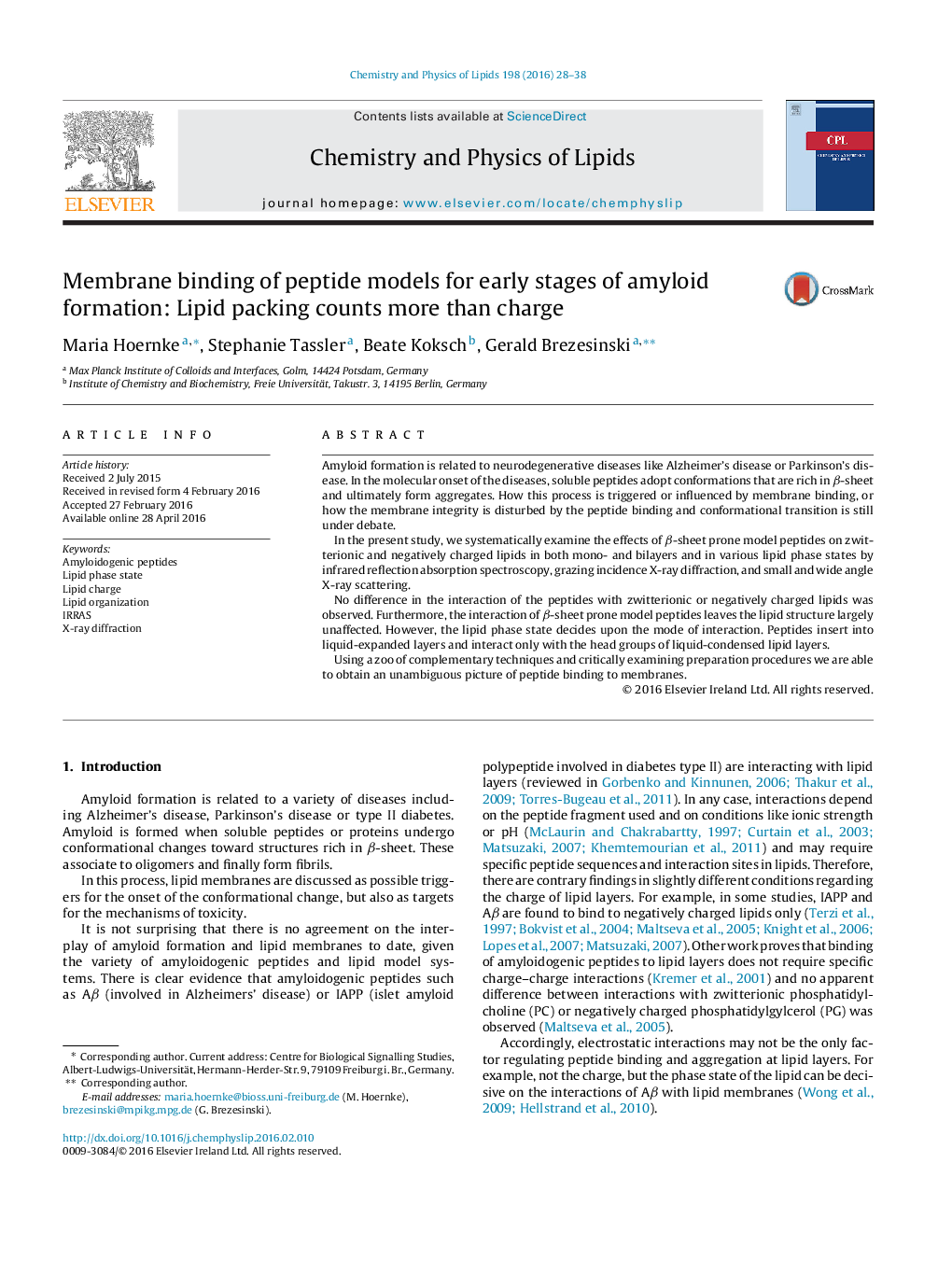| Article ID | Journal | Published Year | Pages | File Type |
|---|---|---|---|---|
| 1253235 | Chemistry and Physics of Lipids | 2016 | 11 Pages |
•Amyloidogenic and amphipathic model peptides interact with lipid monolayers and dispersions.•Method for preparing monolayers interferes with experimental results.•Interactions with zwitterionic or negatively charged lipid layers are similar.•Peptides insert into lipid fluid phase and interact with the head groups of condensed phases.•Lipid phase behavior, hydration or chain lattice are not influenced by peptides.
Amyloid formation is related to neurodegenerative diseases like Alzheimer's disease or Parkinson's disease. In the molecular onset of the diseases, soluble peptides adopt conformations that are rich in β-sheet and ultimately form aggregates. How this process is triggered or influenced by membrane binding, or how the membrane integrity is disturbed by the peptide binding and conformational transition is still under debate.In the present study, we systematically examine the effects of β-sheet prone model peptides on zwitterionic and negatively charged lipids in both mono- and bilayers and in various lipid phase states by infrared reflection absorption spectroscopy, grazing incidence X-ray diffraction, and small and wide angle X-ray scattering.No difference in the interaction of the peptides with zwitterionic or negatively charged lipids was observed. Furthermore, the interaction of β-sheet prone model peptides leaves the lipid structure largely unaffected. However, the lipid phase state decides upon the mode of interaction. Peptides insert into liquid-expanded layers and interact only with the head groups of liquid-condensed lipid layers.Using a zoo of complementary techniques and critically examining preparation procedures we are able to obtain an unambiguous picture of peptide binding to membranes.
